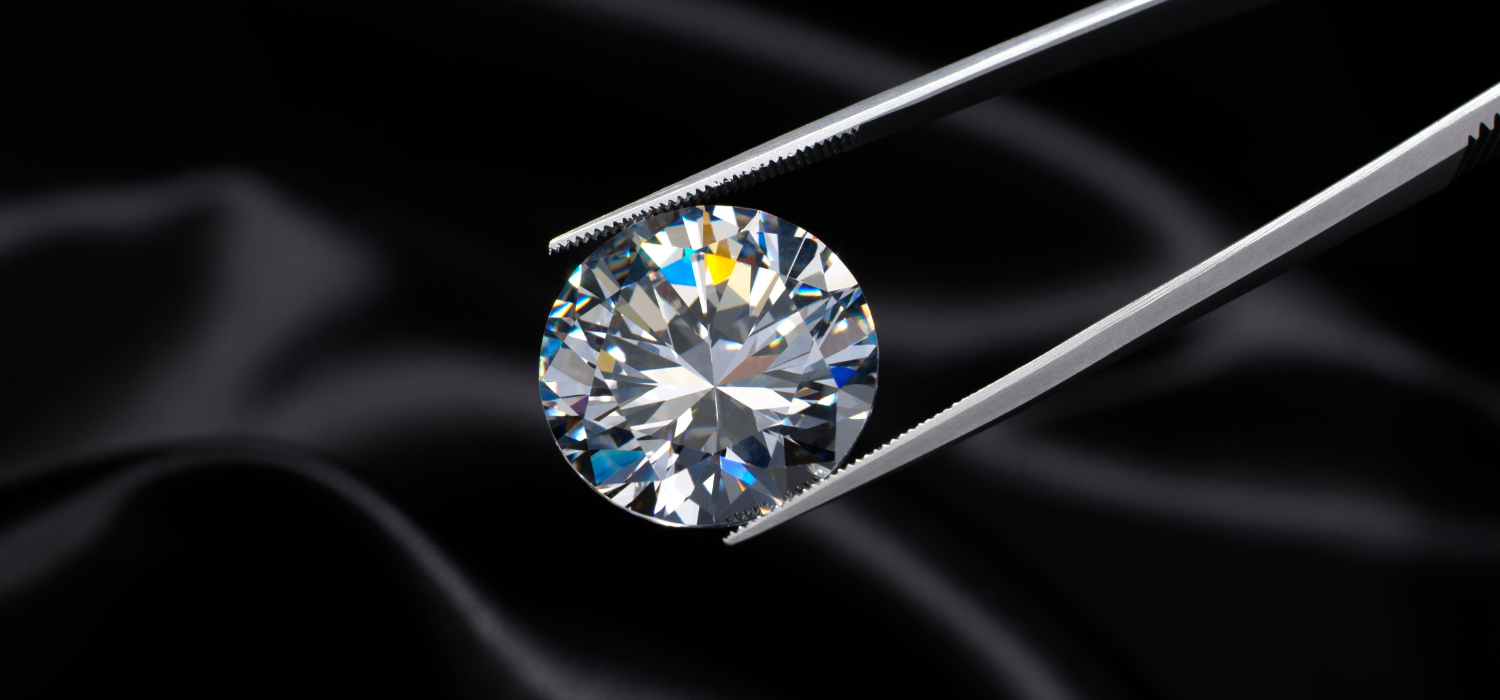Lab-Grown vs Earth Mined Diamonds
There is no wrong answer, but there will be a correct answer for you.
What is a Lab-Grown Diamond?
Lab-grown diamonds are not new in the scientific community. However, large, affordable diamonds that look indistinguishable without magnification is a fairly new phenomenon. High Pressure High Temperature (HPHT) or Chemical Vapor Deposition (CVD) are the methods of manufacture, but don’t let the idea of “manufacture” fool you into thinking they are not carbon based diamonds. Lab-grown diamonds have the exact same chemical composition, hardness, durability and will look identical (save the look of the internal characteristics) to their Earth-mined diamond counterpart.
§ 23.11 Definition and misuse of the word "diamond." (a) A diamond is a mineral consisting essentially of pure carbon crystallized in the isometric system. It is found in many colors. Its hardness is 10; its specific gravity is approximately 3.52; and it has a refractive index of 2.42.
FTC Trade Regulations Rules and Industry Guidelines
Can You Tell Them Apart?
As a gemologist, yes. Can your friends and family? Highly unlikely.
The internal characteristics of lab-crystallized carbon vs earth-crystallized carbon are completely different as is the overall “tone” or “feel” of the gem. When we are talking about super petite accent diamonds, that gets tricky. In larger gems, we find the lab-grown, while engineered to be colorless and sparkling, does that almost too well. Technology has advanced so much to reduce variables, it has, in our opinion, created an “unnaturally” clean and bright gem. The trace elements in the Earth that find their way into a forming carbon crystal are the unique characteristics and variables that simply cannot be manufactured.
Hold on now… Is that an issue?
Only if the connection to the earth, character of a one-of-a-kind crystal and spark of charm is what you are looking for in your diamond. Many of our guests are simply interested in an affordable, white/colorless, sparkly gem. If you are in this camp and future resale is of little to no concern, then lab grown should absolutely be a consideration.
Lab-Grown vs Earth Mined Diamonds
While lab-grown diamonds are manufactured in a controlled laboratory environment, Earth-mined diamonds occur organically and are formed deep inside the Earth’s mantel. Under extreme pressure and high temperatures, carbon crystallizes and forms into diamond. Many diamonds make their way from the Earth’s mantel to your jewelry by way of Kimberlite (magma/volcanic) pipelines, oceanic currents and shifting tectonic plates. Most Earth-mined diamonds are millions, if not billions, of years old making them a magnificent treasure from the Earth. In terms of pricing, Earth-mined diamonds can vary widely depending on their cut, color, clarity, and carat weight (the 4 C’s).
Lab-grown diamonds are also priced according to the 4-C’s but are considerably less expensive – up to 40%-60% less and falling. Unlike Earth-mined diamonds, whose supply is finite, the quantity of lab-grown diamonds being produced is increasing and unrestricted. In a supply and demand based economy, this means the lab-grown diamond market currently lacks long-term price stability. Lab-grown diamond prices are likely to continue to fall as manufacturing capability improves and quantities rise.
But I Want to Help the Earth
Let’s dig in. (get it?)
Ultimately while there are many well intentioned consumers, it is our belief that we are at an ecological impasse. Many papers have been published, articles written (including citations below) outlining the arguments.
The take away is that there is no strong evidence to support that neither a mined nor grown diamond is unequivocally better or more “sustainable” than the other. We at Croft & Stern highly value transparency, integrity and education. We have no personal agenda other than assisting you in your decision making process. We are actively looking for ways that, as a business, we can lessen our carbon footprint. We want an environmentally friendly diamond choice and trust that there may be a legitimate option in the future. For now, dear reader, do know that both lab and Earth-mined diamonds will have both positive environmental output and negative - rendering either option to have equal levels of environmental/social impact in our eyes, all things considered.
Man-made diamond companies regularly call their product “eco-friendly” and “sustainable.” It’s now become a basic part of the lab-grown pitch, a way of letting consumers know they are not just getting a cheaper product but a meaningful one (though price remains the driver, most say). Reporters often print these claims, uncritically. And with concern about climate change clearly on the rise, that could prove a potent positioning.
Yet, these claims are rarely examined—and terminology is often extremely fuzzy. Charlotte Vallaeys of Consumer Reports notes that a term like “environmentally friendly” has no real definition and “could mean whatever the company wants it to mean.”
The Federal Trade Commission’s (FTC) Green Guides explicitly discourages “broad, unqualified general environmental benefit claims like ‘green’ or ‘eco-friendly,’ ” as they are “difficult to substantiate, if not impossible.” Perhaps for this reason, the more circumspect lab-grown companies tend to use word sustainable.
Yet, man-made diamonds are unusual for a “sustainable” product. They are produced in factories. Granted, they’re mostly clean, modern, non–assembly line factories. But they’re not greenhouses, though some use that term. The machines that produce diamonds “require constant energy, 24/7, running huge microwave-heat generators,” says one ex-employee.
-Rob Bates for JCK Magazine
Lab-grown gem-quality diamond producers pose less of a threat to the environment than mining companies, as they use less freshwater, emit fewer greenhouse gases, and do not disrupt the land. However, they do not contribute to the economy and society as much as mining companies, and there is still the issue of transparency that needs to be addressed.
Extraction mining has long been associated with exploitation of resources and human rights abuses. However, at the end of the 20thcentury, mining companies—in coalition with government and nongovernment organizations—began pushing for more sustainable objectives. (For more, see F.P. Carvalho’s article, “Mining Industry and Sustainable Development: Time for Change,” published in Food and Energy Security in 2016.) Mining has made important contributions to economic growth, GDP, infrastructure development, and job creation worldwide. In other words, when it comes to evaluating the environmental and social impact of diamond mining, there is a trade-off between the economic and social benefits and the environmental costs.
- Giselle Saati for Jewellery Business
Are Diamonds Conflict-Free?
Rest assured that many, many protections have been in place to ensure that the diamonds brought into the US/EU are conflict-free. A certain 2006 movie did document industry atrocities - a plight that is a result of geopolitical issues in non-regulated countries. We do continue to source Earth-mined diamonds from vendors and cutting houses in places like Antwerp, Belgium, where there are strict adherents to the legislature and regulations below.
CBP is active in the U.S. implementation of the Clean Diamond Trade Act, which formalized U.S. participation in the Kimberley Process. The Clean Diamond Trade Act was signed into law on July 29, 2003, and prohibits the "importation into, or exportation from, the U.S. of any rough diamond, from whatever source, unless the rough diamond has been controlled through the Kimberley Process Certification Scheme (KPCS)." Rough diamonds, also known as conflict diamonds, are defined as diamonds used by rebel movements to finance military action opposed to legitimate and internationally recognized governments. The KPCS is an international initiative that combats rough diamond importation. As the import authority for the U.S., CBP regularly leads enforcement actions on violations related to diamonds.
The KPCS is a joint-government, internationally recognized certification system that imposes extensive requirements on its members to enable them to certify shipments of rough diamonds as ‘conflict-free’ and prevent conflict diamonds from entering legitimate trade.Conflict Diamonds and the Kimberley Process Certification Scheme
The Kimberley Process (KP) in an international, multi-stakeholder initiative created to increase transparency and oversight in the international diamond trade in order to eliminate the trade in conflict diamonds, or rough diamonds sold by rebel groups or their allies to fund conflict against legitimate governments. The Kimberley Process Certification Scheme (KPCS) provides the rules that govern the trade in rough diamonds. The Clean Diamond Trade Act of 2003 and Executive Order (EO) 13312 commit the U.S. government to the KP and establish a framework for how the U.S. implements that commitment. The Rough Diamonds Control Regulations (RDCR), as amended, 31 C.F.R. § 592, implement EO 13312 and set forth the obligations of U.S. importers and exporters. In 2012, U.S. Customs and Border Protection (CBP) amended the CBP regulations to add a regulation (19 C.F.R. §12.152) restating pertinent provisions of the RDCR and clarifying the recordkeeping requirements of U.S. importers, consignees, and exporters.
The SoW was born out of the will of the WDC to strengthen and expand the KPCS and create the industry’s first self-regulation mechanism.
On September 21, 2021, the UN-recognized International Day of Peace, the WDC launched its upgraded System of Warranties, and in so doing raised the bar considerably in respect to the ethical and social integrity of the diamonds being sold. It includes a revised declaration to be added to the sales document, which not only states that the diamonds are compliant with the KPCS, but that they also meet the standards of the WDC System of Warranties Guidelines, which require that they have been handled in accordance with universally accepted human and labor rights, and according to global anti-corruption and anti-money laundering principles.
Edward Asscher
WDC President, OCTOBER 5, 2021A CALL TO ACTION: ADOPT THE UPGRADED SYSTEM OF WARRANTIES TODAY
Key Takeaways
The decision is a personal choice! Many factors, like pricing, size and shape may go into your decision on which to buy.
Even playing field for the environment
Both are diamond - in every physical aspect
Lab-diamonds are, on average, much less cost but with little to no value retention
Earth-mined diamond will typically retain some value, however it can be difficult to find a buyer especially in a lab-grown saturated market and there is a higher initial investement
Lab-diamonds are typically available much larger and more white and bright for less money than an Earth-mined - they do seem rather “antiseptic” in just how perfect they are
Earth-mined have a special character and “intrigue” - a proverbial “spark” which cannot be made in a laboratory
Earth-mined diamonds need better PR - Significant strides over decades have radically changed mining operations. These mines are under extremely strict regulations.
Either way you go, our goal is to set you up for success. We are here to pair you with the correct diamond selection for YOU.
Croft & Stern Jewelry Designs is proud to offer a beautiful selection of both Earth-mined and lab-grown diamonds. Our diamond experts are happy to chat with you further and help you decide which option might be best for you. Whichever option you choose, we will help you select a beautiful diamond that will last a lifetime.
SAD JEWELER
This is your jeweler without diamonds.
HAPPY JEWELER
This is your jeweler with diamonds!
We are thrilled that you found YOUR diamond.




